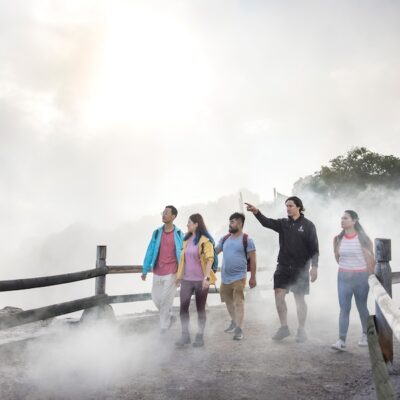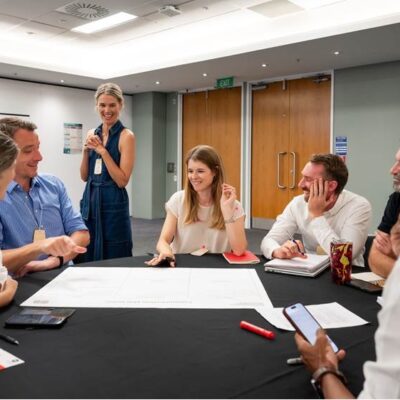Helping people succeed in new jobs in new industries
Stewart Forsyth explains how to match existing experience and skills against new jobs in a new industry. Some industries are down and will likely remain down – the consequence of us […]
Stewart Forsyth explains how to match existing experience and skills against new jobs in a new industry.
Some industries are down and will likely remain down – the consequence of us going into lockdown and massively, going from looking after the needs of thousands of international students and millions of tourists to none of these visitors. Other industries are doing better – according to BNZ CEO Angela Mentis, travel, accommodation and restaurants are down, but IT, software and food supply have gone up.
Correspondingly people are losing jobs in travel, tourism and hospitality, but there are opportunities in health, IT and food production and supply. The government is about to announce initiatives in construction and infrastructure – with the goal of creating more work.
Are we ready to help people move to new jobs in new industries?
Eugenie Sage, the environmental spokesperson for the Greens provides an example of transferring an unemployed tourist guide into infrastructure work using their people and project management skills.
How to help people move to new jobs? There is a risk that the tourist guides line up, but are not hired for the jobs requiring shovel skills. Or they are hired, and have difficulties with some parts of the job they are not prepared for.
This is not a tear-down of the idea of helping people move into new jobs. Quite the opposite. This is meant as guide to making that happen.
This short article proposes an approach to matching existing experience and skills against new jobs to help make decisions about who to hire, and what training is needed to help make that hire successful.
Tour guide to construction supervisor
The first illustration is the tourist guide moving to a role as construction supervisor. Instead of striding along the track at the head of tourists, they would be helping build the track. Instead of waving at the view and telling the story about it, they would be overseeing clearing the gorse that obscures the view.
The table shows the top five activities for each role. This detail is taken from the super-detailed O-Net resource provided by the US Department of Labor (google “o-net online”). In New Zealand we have excellent career planning and job finding resources, but they don’t attempt to dive into job detail.
| Tourist guide: Top five work activities |
Construction supervisor: Top five work activities |
|
Getting information – observing and otherwise obtaining information. |
Getting information – observing and otherwise obtaining information. |
|
Communicating with supervisors, peers and subordinates. |
Communicating with supervisors, peers and subordinates. |
|
Establishing and maintaining constructive and collaborative relationships. |
Coordinating the work and activities of others to accomplish tasks. |
|
Performing for and working directly with the public – including serving and receiving. |
|
| Inspecting equipment, structures or materials. | |
| Communicating with people outside the organisation; representing the organisation. | |
| Organising, planning and prioritizing work via goals and plans. |
There is a clear match between two of the work activities in the two roles (both jobs require getting information and communicating with work mates), and a reasonable match between another two (there is overlap between maintaining relationships and coordinating others). This could be seen as an approximate 50 percent match – two and a half of the five key work activities match.
The training requirements are clear – the tourist guide will need skills in task management, inspection and work planning and organising.
You might be thinking that this is an example of the blindingly obvious. I respectfully submit, that it is more obvious in hindsight.
Without a systematic approach there is a real risk that construction professionals tasked with hiring construction supervisors will over-weight the trades skills that would enable candidates to do inspection work, and pass over good candidates with information getting and communication skills. And that good, but only half-ready candidates are hired, and miss key activities and blow the job opportunity (as well as making life difficult for their colleagues, even putting people at risk).
Just to reinforce my point, I’ll cover another potential job move – again from an ‘at risk’ job.
From cabin crew to picking groceries
Another recent example is a cabin crew member moving to picking and packing boxes of groceries. From handling passengers and handing out drinks and meals to getting the right food into the box. Again, looking at the key job activities – we can see some matches, and some gaps.
| Cabin crew: Top five activities |
Picking and packing: Top five activities |
| Performing general physical activities – whole body. |
Performing general physical activities – whole body. |
|
Handling and moving objects – hands and arms. |
Handling and moving objects – hands and arms |
| Performing for or working directly with the public – including serving and receiving clients or guests. | Establishing and maintaining interpersonal relationships. |
|
Communicating with supervisors, peers or subordinates – providing information. |
|
| Identifying information through recognition of changes in circumstances or events. |
Getting information – obtaining information from relevant sources. |
|
Assisting and caring for others. |
The obvious similarities are in terms of moving things and handling things. There are similarities in the interpersonal requirements on the cabin crew job and the relationships and communication required of the picker and packer. For cabin crew the emphasis is on customer service which rests on listening and understanding. These skills would provide a good bridge to the interpersonal skills the picker needs.
There is also a reasonable match between being aware of what is going on (‘identifying information’, such as ‘that is the fifth time that passenger has asked for a rum and coke’) and getting information – keeping a track on inventory for example.
The missing bit for the cabin crew member would be the absence of opportunity to support and nurture others.
Helping with the job move
There is more to a career than the match of different job activities. There is the passion or enthusiasm for the work. Is this a job that the individual will find provides meaning and engagement? For job candidates the CareerQuest tool at the careers.govt site will help check that – along with information on which jobs have good prospects.
For the job candidate motivated to move to a new job:
- Check the requirements of the job.
- Prepare examples of how you have successfully fulfilled the requirements. Tell a story about each of them – with a beginning, middle and end.
- Demonstrate your enthusiasm for doing these tasks.
For the person hiring:
- Ask the questions which give the candidate the chance to demonstrate how they will perform in the key job tasks.
- If you hire them, work out a training plan to back-fill any gaps, and regularly review (and encourage) progress.
For those hiring people out of a different industry – the clearer you are about the experience and skills needed, the more likely you’ll make a great hire, based on their ability to do good work, rather than whether they fit a pre-determined template, based on some of your accidentally acquired beliefs about what a good candidate looks like.
Stewart Forsyth is an organisational psychologist and executive coach. He has more examples of what is required in moving from at risk jobs to jobs that have a future. http://www.fxc.co.nz






